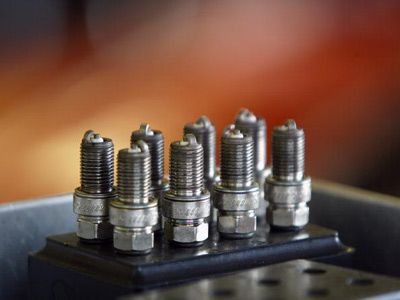When you buy a new spark plug for your car engine, the packaging may state that it is pre-gapped, but its gap may nevertheless need to be adjusted for your particular vehicle. This is especially true if the spark plug was mishandled or dropped during packaging or shipping.
Find out from your car owner's manual or from your car dealer what the ideal gap is for a spark plug in your car. You should always read your car's owner's manual before servicing your engine, and refer to the spark plug manufacturer or a professional auto mechanic if you have any questions.
Advertisement
Keep in mind that the higher the compression in your engine and the more power it makes, the smaller a gap your spark plug will need. The larger the gap, the more voltage you'll need from your ignition so the spark can jump across that gap [NGK Spark Plugs].
Here's how to gap your new spark plug:
- Use a feeler gauge to check the gap of the spark plug.
- Choose the correct wire based on the size of the gap.
- Run the wire between the two electrodes of the spark plug. The wire should catch on them as it passes through.
- Widen the gap, if necessary, by hooking the gauge on the ground electrode and tugging gently. Be careful that the gauge touches only the ground electrode and not the porcelain or the center electrode.
- Narrow the gap, if necessary, by pressing or tapping the ground electrode gently against a clean, soft surface.
- Check the gap and adjust it as necessary [source: DENSO].
Don't adjust your spark plug gap more or less than .008 inch (.2 millimeters) because if you do, the two electrodes may not line up properly, which will hinder the performance of your spark plug [source: NGK Spark Plugs].
Advertisement

